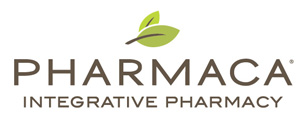Elephant Pharm, the six-year-old alternative pharmacy chain based in northern California, filed Chapter 11 bankruptcy papers two days ago.
 The vision of Elephant was to provide customers with both traditional medicines along with homeopathic treatments.
The vision of Elephant was to provide customers with both traditional medicines along with homeopathic treatments.
The store’s footprint of 12,000 feet held space for both product and services. Practitioners were available in the store with whom consumers could consult on a range of issues, from Ayurvedic herbs to treat headaches to yoga.
Note that a similar company, Pharmaca, shares Elephant’s commitment to integrative medicines, but is based on a much smaller design of about 5,000 square feet. Pharmaca has 23 stores, a doubling of the chain in 2008.
Along with venture funding, Elephant had received investment from CVS, the pharmacy chain.
Health Populi’s Hot Points: What does the decline and fall of Elephant Pharm mean for health @ retail?
First, size matters. At its largest, Elephant Pharm was a chain of 4 locations. The financial model of the business needed to achieve a certain scale to be profitable and to weather the economic decline. Credit was tight, and the company couldn’t raise enough capital to continue doing business.
 From the customer’s standpoint, people paying out-of-pocket for health goods and services are looking for value. Elephant stocked a lot of high-end products on its shelves, and not just health-oriented items: there were toys, teas, foodstuffs, greeting cards.
From the customer’s standpoint, people paying out-of-pocket for health goods and services are looking for value. Elephant stocked a lot of high-end products on its shelves, and not just health-oriented items: there were toys, teas, foodstuffs, greeting cards.
In its six-year lifetime, Elephant had seen an increasing number of retail competitors for many of the more mainstream product categories. A growing volume of bar codes for complementary and alternative medicines (CAM) have been adopted by virtually every large grocery chain with pharmacies. The natural foods aisles are growing in places like Wal-Mart, Wegmans and Winn-Dixie (and those are only the grocers starting with the letter ‘W’).
Scale is key for retailers; value is top of the mind for consumers. But I would not count out CAM in this economic environment. It just must be delivered on sound retailing and merchandising business models, all starting with the letter “V” for Value.





 Interviewed live on BNN Bloomberg (Canada) on the market for GLP-1 drugs for weight loss and their impact on both the health care system and consumer goods and services -- notably, food, nutrition, retail health, gyms, and other sectors.
Interviewed live on BNN Bloomberg (Canada) on the market for GLP-1 drugs for weight loss and their impact on both the health care system and consumer goods and services -- notably, food, nutrition, retail health, gyms, and other sectors. Thank you, Feedspot, for
Thank you, Feedspot, for  As you may know, I have been splitting work- and living-time between the U.S. and the E.U., most recently living in and working from Brussels. In the month of September 2024, I'll be splitting time between London and other parts of the U.K., and Italy where I'll be working with clients on consumer health, self-care and home care focused on food-as-medicine, digital health, business and scenario planning for the future...
As you may know, I have been splitting work- and living-time between the U.S. and the E.U., most recently living in and working from Brussels. In the month of September 2024, I'll be splitting time between London and other parts of the U.K., and Italy where I'll be working with clients on consumer health, self-care and home care focused on food-as-medicine, digital health, business and scenario planning for the future...